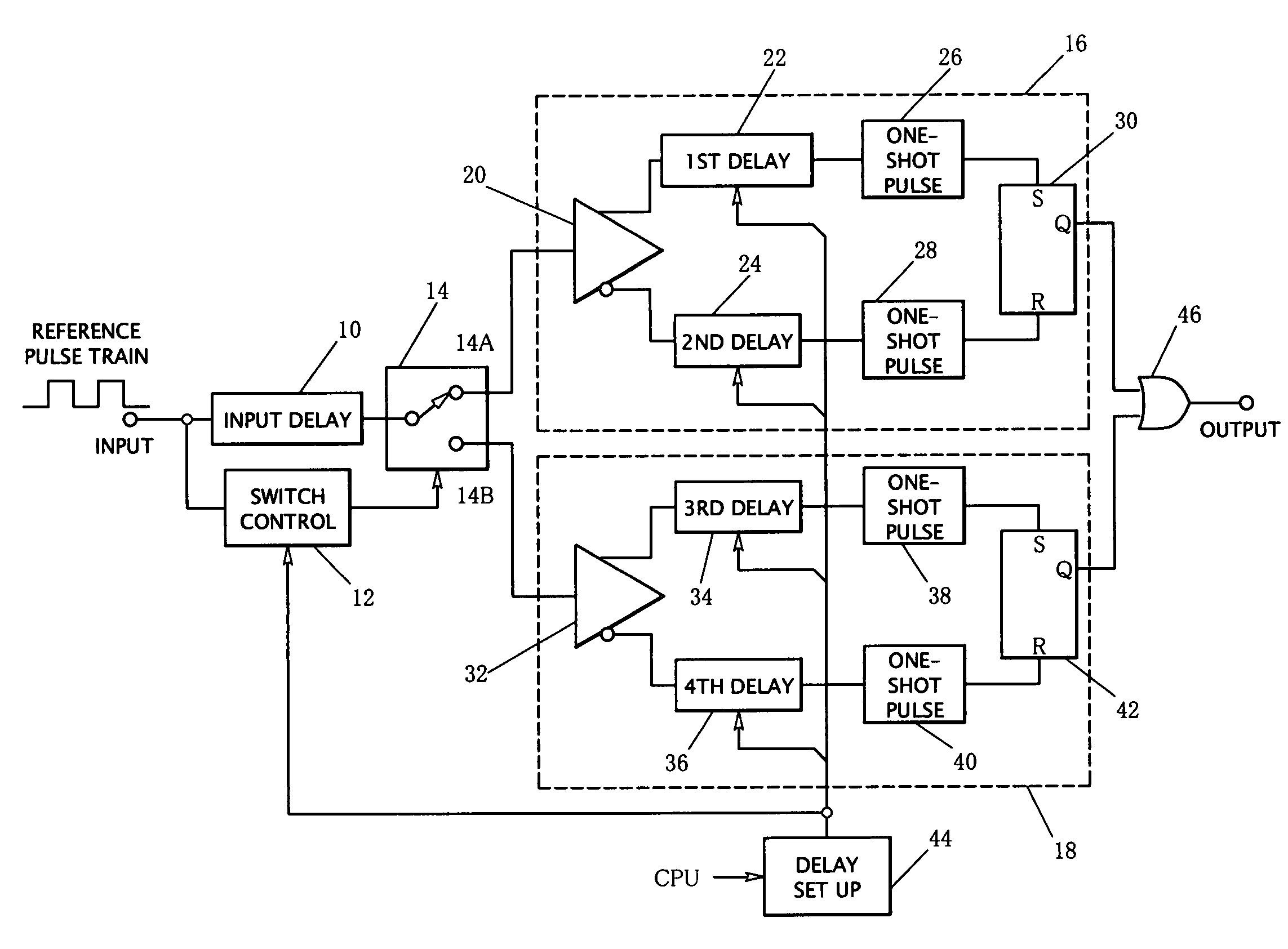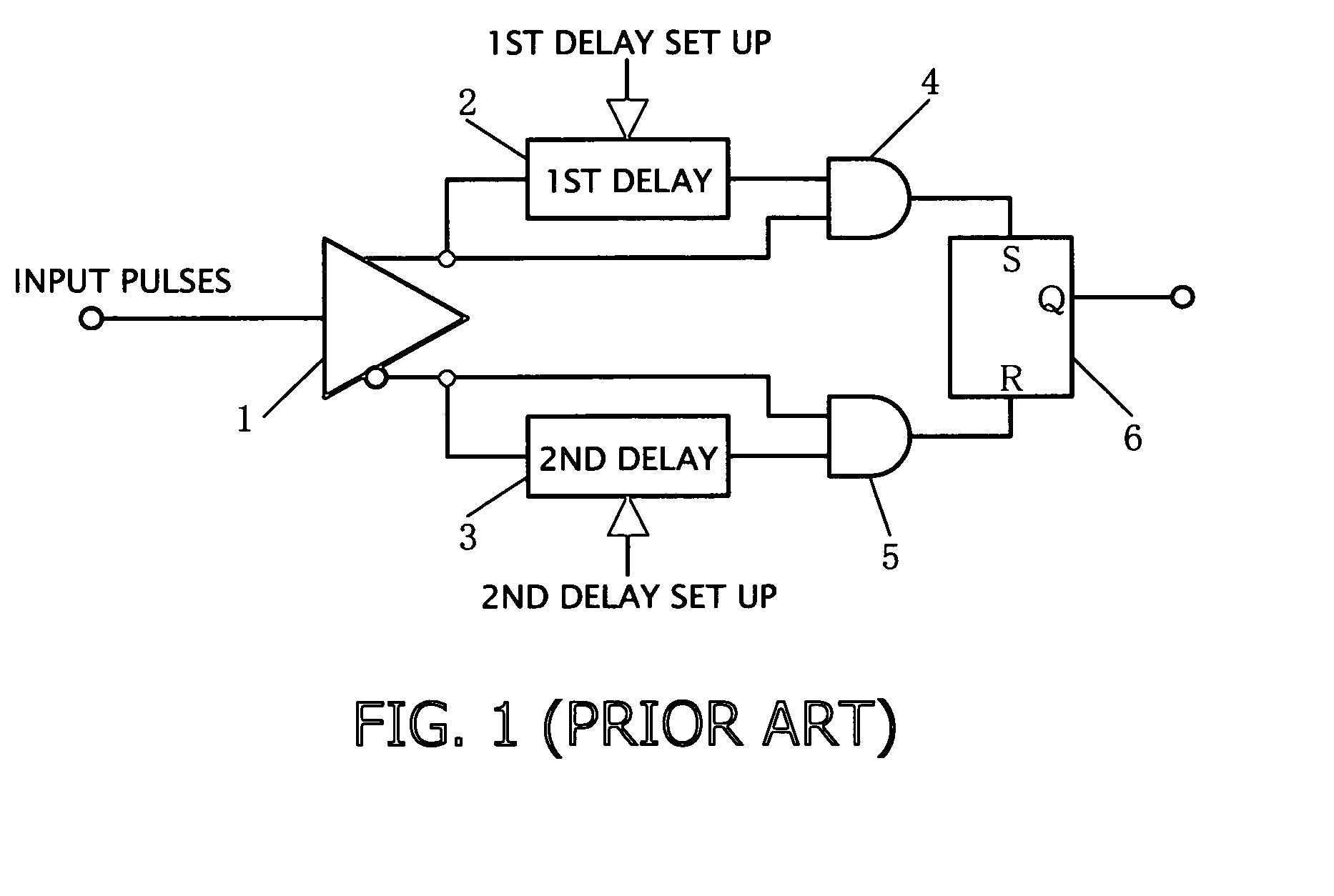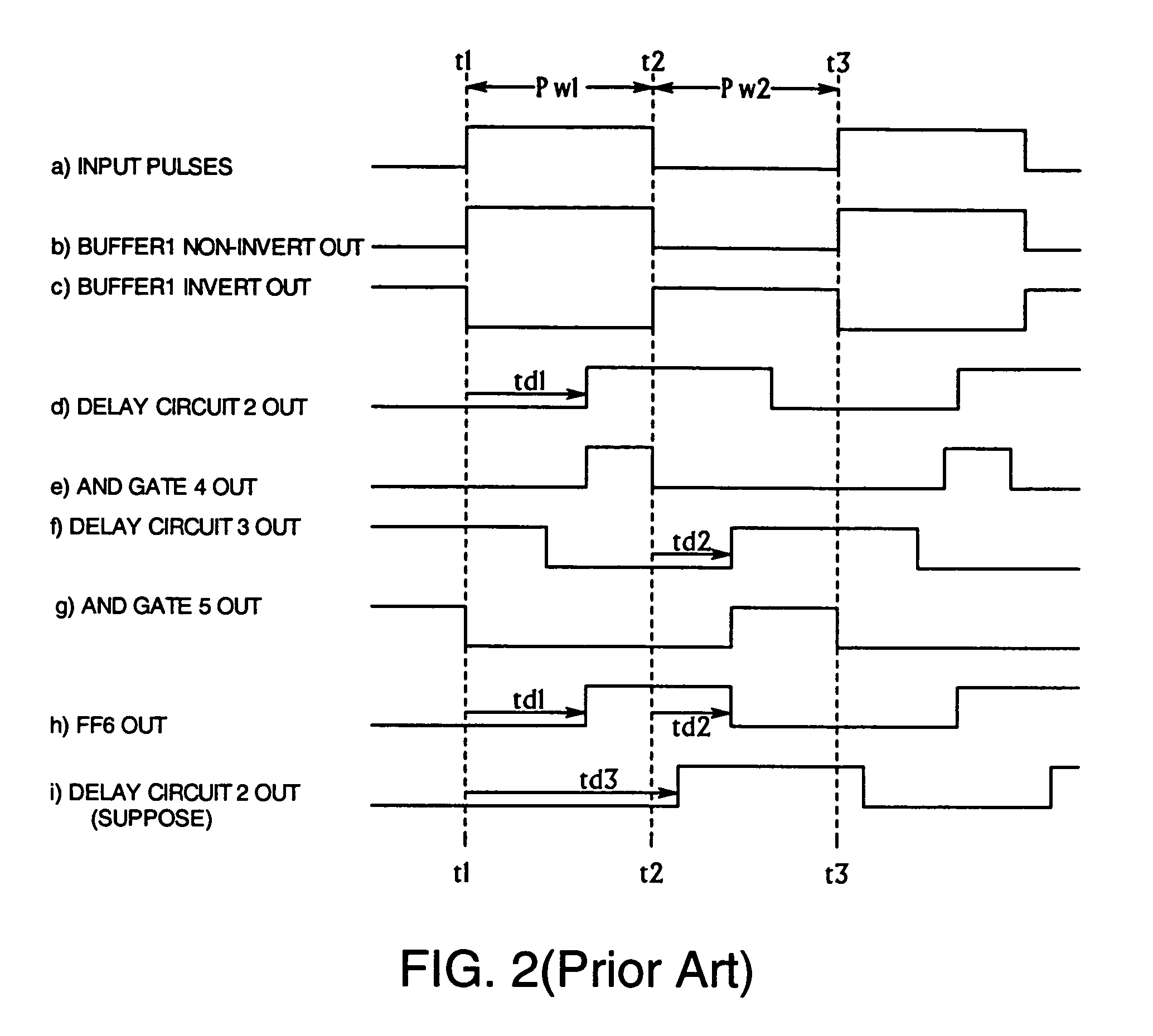Circuit and method for inducing jitter to a signal
a circuit and signal technology, applied in the field of circuits and methods for inducing jitter to signals, can solve the problems of difficult to achieve small amounts of accurate delay time, difficult to get an accurate delay time for high frequencies, and not always ideal condition of digital signals provided to digital circuitry
- Summary
- Abstract
- Description
- Claims
- Application Information
AI Technical Summary
Benefits of technology
Problems solved by technology
Method used
Image
Examples
Embodiment Construction
[0033]A jitter inducing circuit according to the present invention can provide fast, accurate and continuous delay times to edges of an input reference pulse train. The input pulse train may be a normal pulse train used in various digital circuits, and is called a reference pulse train hereinafter. The output pulse train of the jitter inducing circuit may serve as a jitter tolerance test signal that is used for determining how much jitter causes operational errors in a digital circuit under test.
[0034]FIG. 4 shows a schematic block diagram of a first embodiment of the jitter inducing circuit according to the present invention. The jitter inducing circuit operates under microprocessor control having well-known peripherals for a microprocessor system such as display, keyboard, mouse, CPU, RAM and hard disk drive though they are not shown. The hard disk drive stores computer program for conducting the procedures of the present invention.
[0035]An input delay circuit 10 and a switch cont...
PUM
 Login to View More
Login to View More Abstract
Description
Claims
Application Information
 Login to View More
Login to View More - R&D
- Intellectual Property
- Life Sciences
- Materials
- Tech Scout
- Unparalleled Data Quality
- Higher Quality Content
- 60% Fewer Hallucinations
Browse by: Latest US Patents, China's latest patents, Technical Efficacy Thesaurus, Application Domain, Technology Topic, Popular Technical Reports.
© 2025 PatSnap. All rights reserved.Legal|Privacy policy|Modern Slavery Act Transparency Statement|Sitemap|About US| Contact US: help@patsnap.com



